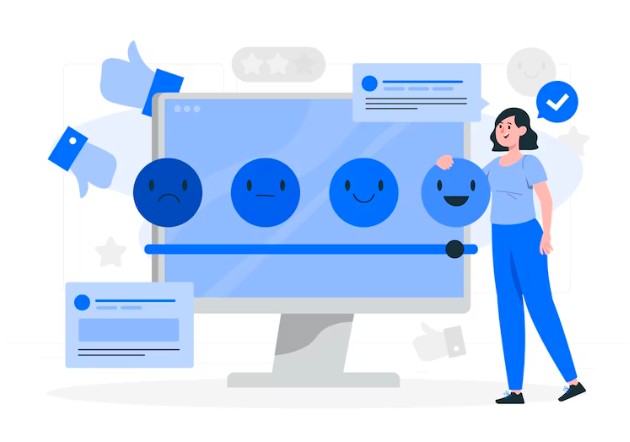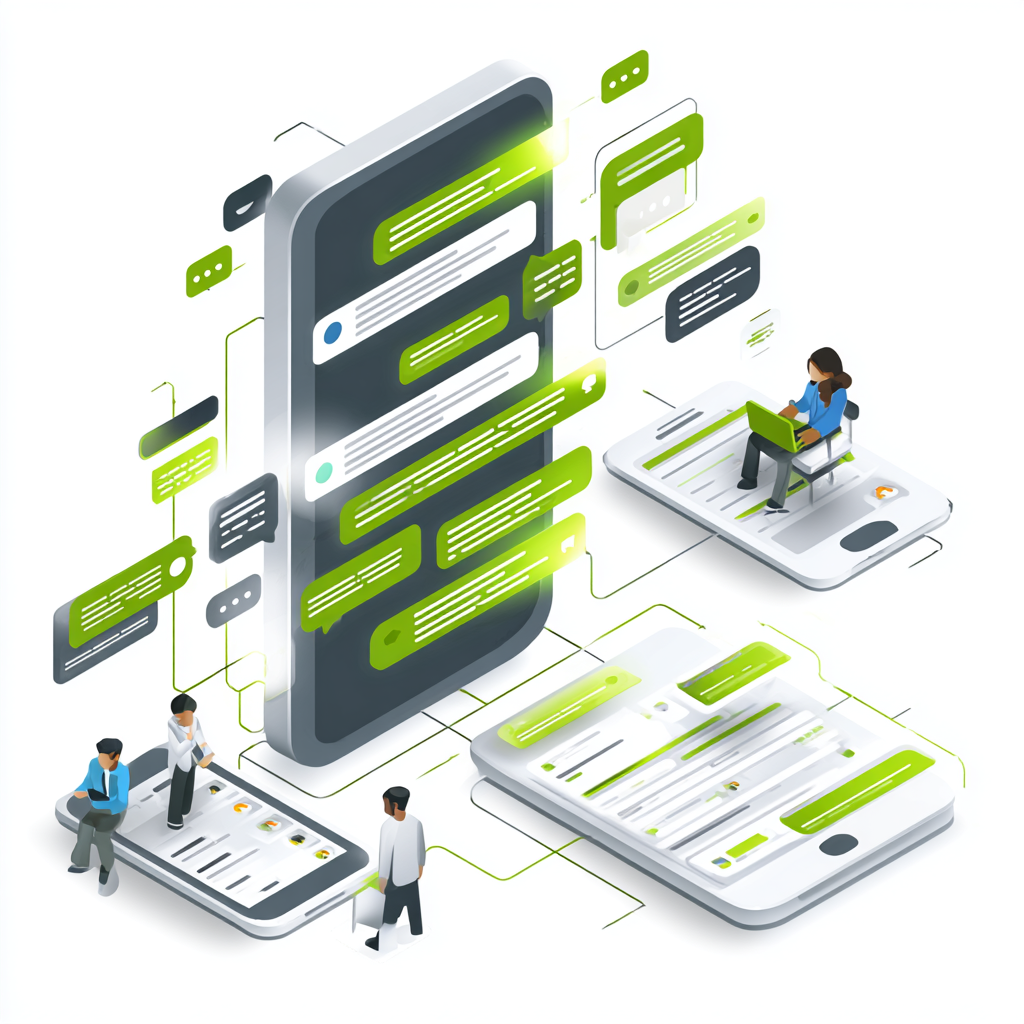A customer experience model defines how a business understands and improves every point of contact with its customers. It is about shaping the entire journey, from the first time someone hears about your brand to when they become a loyal buyer. Remember your last great online shopping experience: the website was easy to navigate, support was responsive, and your order arrived early. That seamless process is the result of a strong customer experience model. In a market where customers have endless choices, they expect quick support, smooth interactions, and to feel valued. If they do not get that, they leave. This article explains a customer experience model, why it is essential, and how to build one to improve loyalty and drive growth.
What is a customer experience model?
A customer experience model shows how a business understands and improves every point of contact with its customers. It is the whole journey from first impression to repeat purchase. When the website works well, support responds fast, and delivery is smooth, that is a good model in action. Customers expect quick, easy, and respectful interactions in a market full of choices. This article explains a customer experience model, why it matters, and how to build one that keeps people coming back.
Why is a customer experience model important?
Customer loyalty is hard to win and easy to lose. A strong customer experience model gives you an edge. It:
1. Reduces frustration
A clear model helps reduce frustration for both customers and employees. It reveals patterns, like repeated complaints or technical glitches in your app. These insights help your team take action faster. Instead of reacting to each issue as it comes, you proactively fix root causes. Over time, this leads to fewer angry emails and shorter support wait times.
2. Aligns departments
It connects the dots between departments. Marketing, sales, product teams, and customer support can align their efforts when they follow the same model. Everyone works with the same understanding of the customer journey. For example, if marketing knows that post-purchase support is a weak point, they can manage expectations better. If support knows why a product was promoted a certain way, they can handle related inquiries more effectively. This shared knowledge leads to fewer handoffs and more cohesive communication.
3. Builds loyalty
When customers feel understood, they stay longer. They spend more. They recommend your brand to others. A customer experience model helps you deliver on promises, respond empathetically, and solve problems before they escalate. Brands like Zappos and Amazon have mastered this. Their models emphasize ease, speed, and personalization traits customers now expect. If your experience meets those expectations, you will keep more customers and grow through word-of-mouth.
4. Drives better decision-making
With a clear model, you collect and analyze customer data more effectively. This helps you make smarter decisions. Whether launching a new feature or updating policies, your choices are guided by what customers want, not assumptions. It reduces costly trial and error and helps you prioritize initiatives with the greatest impact.
5. Boosts long-term growth
A great customer experience model does not just fix problems; it creates opportunities. Happy customers are more likely to join loyalty programs, participate in feedback loops, or try new services.
Key components of a customer experience model
An effective customer experience model relies on several core components. Each plays a role in how customers perceive your brand and decide whether to stick around or leave.
1. Customer touchpoint
These are every place where a customer interacts with your business. It includes ads, websites, apps, calls, packaging, and emails. Each one shapes how the customer feels about your brand. For example, trust is lost if your ad promises fast delivery but your shipping takes weeks. Touchpoints must be consistent and reflect your brand promise.
2. Customer needs and emotions
What does the customer expect? How do they feel during each stage? A good model tracks emotions and addresses them. Frustration in support? Delight in unboxing? These matter. Brands that understand emotional highs and lows can design better experiences. For example, Apple focuses on delight during product unboxing. That emotional peak reinforces loyalty.
3. Communication channels
Your message must be clear and helpful on social media, email, or chatbots. Customers want quick answers in the way they prefer. Some prefer real-time chat; others are fine with emails. Your model should cover all relevant channels and ensure consistency.
4. Feedback loops
Great models rely on customer feedback. Surveys, reviews, and complaints all feed the system. This helps teams improve weak spots. But it’s not just about collecting feedback, it’s about acting on it. Track progress using tools like NPS (Net Promoter Score) and CSAT (Customer Satisfaction Score).
5. Internal processes and teams
Employees play a significant role. A model looks at how staff respond, what tools they use, and how trained they are. Happy teams create better customer experiences. Internal alignment reduces mistakes and increases efficiency. For example, Zappos is known for its customer-centric culture.
Popular customer experience models to know
Understanding established frameworks can help you build your model or refine what you already have. Here are three of the most well-known.
1. The McKinsey customer decision journey
This model maps out circular journeys instead of straight lines. Customers may research, compare, and revisit brands before they decide. It shows how loyalty loops work. Unlike traditional funnels, this model reflects how modern customers behave. It is helpful for businesses with long buying cycles, like insurance or tech. It helps them stay visible and relevant even when customers are not ready to buy immediately.
2. Forrester’s CX Index
Forrester scores brands based on how well they meet customer needs. It focuses on three things: ease, effectiveness, and emotion. The higher the score, the better the loyalty.
3. Gartner’s CX Pyramid
This model shows five stages of customer interaction. It starts with “meeting needs” and goes up to “changing lives.” The more value you offer, the more loyalty you gain. The levels include:
- Meeting functional needs
- Making things easy
- Providing useful advice
- Delivering personalized experiences
- Creating emotional and life-changing impact
How to build a customer experience model
Creating your model does not require a big budget but requires attention to detail and team collaboration.
- Map the customer journey: Start by writing down every step a customer takes, from seeing an ad to leaving a review. Use customer personas to guide this mapping. Then, identify touchpoints and emotions.
- Identify pain points: Look for moments where things break down. Slow websites, long wait times, and poor packaging are chances to improve. Do not assume. Ask your customers.
- Gather feedback: Use surveys, social media, and reviews. What do customers love? What do they hate? Let their words shape your next move. Don’t just gather feedback at the end of the journey. Ask for it after key moments: onboarding, purchases, and support calls.
- Set clear goals: Decide what success looks like. Fewer complaints? Higher repeat sales? Let your goals guide your changes. Each metric should tie back to the customer experience. Common goals include improving NPS, increasing retention, or shortening resolution times.
- Involve your team: Bring in staff from sales, support, product, and even finance. Everyone should know the model and play a part in it. Hold cross-functional meetings to discuss findings and solutions. Frontline staff often have the best insights. Training is crucial.
- Use the right tools: CRM systems, chat tools, and analytics help track the customer experience. Choose tools that match your needs. Start with what you have, then scale up. Look for tools that integrate. For example, linking your CRM to your help desk software allows for faster service.
Best practices for using a customer experience model
The best practices include:
- Keep it simple: A customer experience model is not meant to be complex. Avoid jargon or extra layers that confuse your team. Stick to the touchpoints, tools, and actions that truly matter to your customers.
- Review often: Your customers’ habits, tech preferences, and expectations change fast. What worked six months ago might not work today. Set a schedule to review your model every quarter. Look at customer behavior, feedback, and business goals. Regular reviews help you stay ahead.
- Train your team: Your team must know how it works and how their role fits into it. Hold training sessions. Use real-life scenarios to explain the model. Make sure new hires learn it during onboarding. When everyone understands the customer journey, they make better decisions.
- Be consistent across channels. Customers expect a smooth experience, and inconsistency confuses them. Imagine a customer hearing one thing from sales and another from support; that hurts trust.
- Act on feedback: Use feedback to spot weak links. Did three people complain about unclear return policies? Fix the wording. Are reviews praising a product update? Promote it more. When customers see you acting on what they say, they feel valued. That builds loyalty faster than a clever ad ever could.





